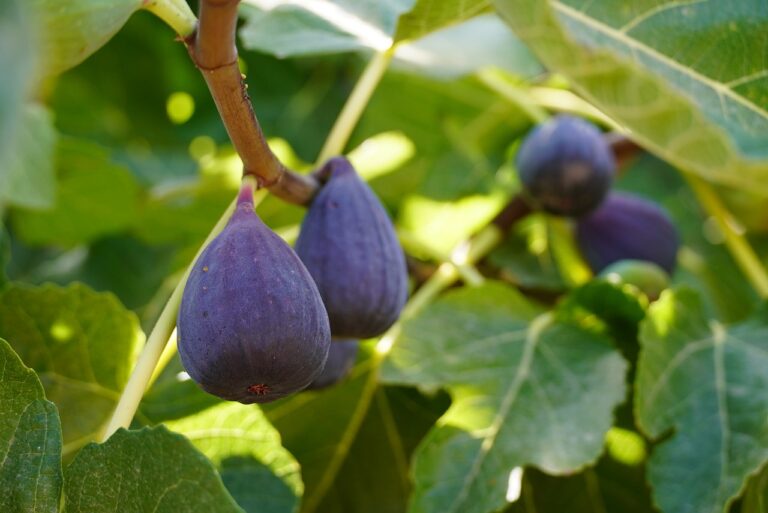Growing a fig tree from seed is a rewarding process that allows you to nurture your tree from its earliest stage. While it takes longer than propagating from cuttings, learning how to grow a fig tree from seed offers the satisfaction of watching your tree grow over time. In this guide, you’ll discover the essential steps for how to grow a fig tree from seed, from seed collection to transplanting and long-term care.
While growing figs from seed takes time, it’s a great project for gardeners looking for long-term rewards. According to Gardening Know How, fig seed propagation is fairly straightforward as long as you prepare the right conditions. You can also learn more about the best practices for growing figs from seed from Permies, where enthusiasts share their tips and experiences.
Best Fig Tree Varieties for Growing from Seed
Choosing the right fig tree variety is important to ensure successful growth. Some popular varieties include:
- Ficus carica (Common Fig): Known for its adaptability to various climates and its sweet fruit.
- Kadota: A green-skinned variety, well-suited to warmer climates.
- Black Mission: A popular choice for its dark skin and sweet flavor, particularly in regions with long growing seasons.
When deciding which fig variety to grow, also consider your local climate. For more tips on matching plant varieties to your environment, check out this guide on growing tomatoes at home, which covers climate considerations in detail.
Collecting and Preparing Fig Seeds for Germination
To grow a fig tree from seed, you’ll first need viable seeds. Here’s how to collect and prepare them:
- Choose a ripe fig: Use fresh, fully ripened figs from your tree or a store.
- Extract the seeds: Cut the fig open and scrape out the seeds, placing them in water. Viable seeds will sink.
- Dry the seeds: Spread the seeds on a paper towel and let them dry for several days before planting.
If you’re looking for ways to enhance your garden’s soil, consider organic methods like using fish scraps as fertilizer. These techniques can improve the quality of your soil, leading to healthier fig trees.
Preparing the Soil for Fig Seeds
Proper soil preparation is key to successful fig seed germination. Here’s how to ensure your seeds have the best start:
- Soil composition: Use a mix of peat, perlite, and fine volcanic rock for optimal drainage.
- pH levels: Slightly acidic soil with a pH between 6.0 and 6.5 is ideal.
- Moisture: Keep the soil moist but not waterlogged, as too much water can lead to rot.
For those planning to grow other crops alongside figs, check out our companion planting guide for herbs and vegetables, which offers tips on optimizing space and soil health.
Step-by-Step Guide: How to Germinate Fig Seeds
Here’s a step-by-step process for germinating fig seeds:
- Sow the seeds: Scatter seeds over the soil and press them lightly. Cover with a thin layer of soil.
- Cover and maintain moisture: Use a plastic cover or dome to retain moisture. Mist regularly.
- Provide warmth: Place the seed tray in a warm area (between 75°F and 85°F).
- Wait for germination: Germination can take 2 to 3 weeks but may extend to 3 months.
When and How to Transplant Fig Tree Seedlings
Once your seedlings have developed, it’s time to transplant them:
- Select the right pots: Choose pots with good drainage that are at least 4 inches in diameter.
- Use well-draining soil: A mix of garden soil, compost, and sand is ideal.
- Gradual exposure: Harden off seedlings by gradually exposing them to outdoor conditions.
Transplanting at the right time ensures strong, healthy growth. For other transplanting tips, check out this comprehensive guide on growing potatoes.
Caring for Your Fig Tree Grown from Seed
Now that your seedlings are established, here’s how to care for your young fig trees:
- Watering: Water when the top inch of soil is dry, ensuring consistent moisture without overwatering.
- Fertilizing: Apply a balanced fertilizer monthly during the growing season.
- Pruning: Prune to promote strong branching and remove any weak or damaged growth.
How Long Does It Take for a Fig Tree Grown from Seed to Bear Fruit?
One of the most common questions about growing fig trees from seed is how long it takes for them to bear fruit. Typically, fig trees grown from seed take 4 to 7 years to mature and begin producing fruit. However, with proper care, some trees may fruit earlier.
Common Problems and Solutions for Growing Fig Trees from Seed
Here are some potential challenges and how to address them:
- Slow or poor germination: This can result from low temperatures or excessive moisture.
- Yellowing leaves: Often a sign of overwatering or nutrient deficiencies.
- Lack of fruiting: Remember that patience is key—fig trees grown from seed take time to mature.
FAQs About Growing Fig Trees from Seed
Can you grow a fig tree from seeds bought at a supermarket?
Yes, but the seeds may take longer to germinate, and the fruit quality may vary.
How long does it take for fig seeds to germinate?
Typically, fig seeds germinate in 2-3 weeks, but it can take up to 3 months depending on conditions.
What is the best soil mix for growing fig trees from seed?
A mix of peat, perlite, and volcanic rock ensures proper drainage and aeration.
Conclusion: The Patience and Reward of Growing Figs from Seed
Growing a fig tree from seed is a slow but rewarding process. With patience and care, you’ll watch your tree grow from a tiny seed to a full-grown, fruit-bearing tree. The time and effort invested are well worth it when you finally harvest your first figs.
For more gardening insights and tips, you can also explore topics like pickling your homegrown vegetables, which complements a thriving home garden.
